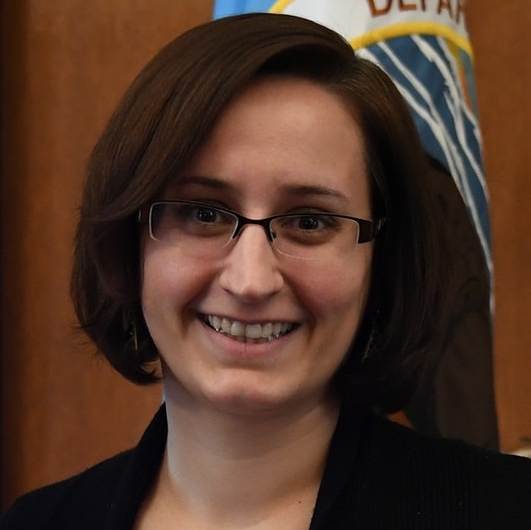Investing in a Caffeinated Planet – Part III
By: Nicole Kruz
November 16, 2017

[In the Part I of this series,Virginia Tech Center for Leadership in Global Sustainability alumni Nicole Kruz provided a short Coffee Basics tutorial, and Part II offered an overview of the environmental impacts of climate change on coffee cultivation and production. Next up, Nicole will discuss the social impacts of coffee and climate change.]
Coffee & Climate Change – Social Impacts
Many people in poorer, developing countries rely on agriculture for their livelihoods. Coffee cultivation is no exception. Around the world, there are over 25 million coffee farmers. The Climate Institute (2016) estimates that of these farmers, the majority “are smallholders with little capacity to build greater resilience.” Smallholders are generally defined as cultivating plots less than 25 acres. Any person, collective, or company cultivating more than 25 acres is referred to as a largeholder or plantation. Often these smallholders farm plots of land less than 5 hectares. Many lack sanitation, health care, and adequate housing. In Mesoamerica, where coffee production forms the backbone of thousands of livelihoods, climate change has resulted in heavy crop losses particularly for these smallholders.
Over 120 million people in more than 70 countries rely on the coffee value chain for their livelihoods. ~ The Climate Institute, 2016
Jobs & Livelihoods
Take farmer Román Lec, as an example. In 2013, coffee rust attacked his crops, which he farms on only a few acres. He lost half of his crop. To compensate for his losses, in 2014 Lec had to borrow money for fertilizer and fungicide to protect his plants. The strategy failed and Lec lost even more than in the previous year. He accounts how stressful the ordeal was, citing that “there are nights when you cannot sleep, thinking how to pay back the money” (Malkin, 2014).
The situation in Brazil and Ethiopia is similar. Plagued by climate-change induced drought, crops in both countries have been decimated in recent years. In 2016, local Brazilian farmer Naygney Assu lost 90% of crop because of the drought, which plagued the region for the third year in a row. Assu, like many others, has become indebted to a bank he cannot pay – coffee cultivation is his livelihood. Without his crop, he has no income (Garcia-Navarro, 2016). Other coffee farmers in the region have begun to diversify their crops in order to keep the income flowing. They say coffee is too difficult to maintain because it requires more water than is available. In a country experiencing the worst drought in 80 years, there is nothing else they can do. They say they may leave the coffee business for good.
The coffee industry generates thousands of jobs in each coffee producing country. For instance, in the South American country of Colombia, the industry generates an estimated 800,000 direct jobs. An additional 1.6 million jobs are creating indirectly through the value chain (i.e. marketing, transportation, exportation, and threshing; Colombian Coffee Insider, 2013). This means that the coffee industry generates employment for over three times and a half times that of rice, corn, and potatoes combined. Being such a driving force of the country’s economy places the crop in the ideal position to influence the economy and rates of poverty.

Conflict
Researchers contend that there is a direct correlation between decreased crop yield and increased violence. Because agriculture continues to play a leading role in securing livelihoods for large swaths of the global population, decreased agricultural production and food security has potentially drastic implications for social and political stability. In their research on food productivity and conflict, Halvard Buhaug and Gerdis Wischnath (2014) identified three complementary processes through which loss of food production could escalate conflicts: more widespread social grievances, lower opportunity costs of rebelling, and increased opportunities for recruitment.
Crop shortages can be caused by several sources, including severe flooding, drought, and extreme temperature variations, as exemplified in the environmental impacts section of this project. For this reason, climate change is viewed with great concern. If people are relying on agricultural crops like coffee for income, environmental stress triggered by climate change will put their livelihoods at risk.
These stressors will impact both subsistence farmers and seasonal crop workers alike. Buhaug and Wischnath (2014) indicate that vulnerable poor populations have been historically served as the “central driving force of rebellions and revolutions where economic hardship threatens the survival of agrarian livelihoods.”
Should the government fail to address concerns adequately, these citizens may be pushed to join uprisings or other conflicts. The Economist found that economic shock had greater effect when land was less suited to farming or where governments were weakest – and therefore less able to curtail conflict.
---


[In Part IV of this series, available November 23th, Nicole Kruz, an alumni of Virginia Tech’s Center for Leadership in Global Sustainability, will discuss the the economic impacts of coffee and climate change.]
Literature Cited:
- Buhaug, H., and G Wischnath. 2014. Rice or riots: On food production and conflict severity across India. Political Geography, 43:6-15.
- The Climate Institute. 2016. A brewing storm: The climate change risks to coffee. Accessed August 7, 2017: http://fairtrade.com.au
- Columbian Coffee Insider. 2015. Coffee is a driving force of the economy and a guarantee of social stability and peace. Accessed August 11, 2017: https://www.federaciondecafeteros.org
- The Economist. 2017. The links between poor harvests and violence. Accessed August 10, 2017: https://www.economist.com
- Garcia-Navarro, L. 2016. Coffee and climate change: In Brazil, a disaster is brewing. Accessed August 7, 2017: http://www.npr.org
- Malkin, E. 2014. A coffee crop withers: fungus cripples coffee production across Central America. Accessed August 7, 2017: https://www.nytimes.com


